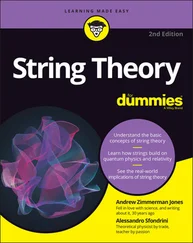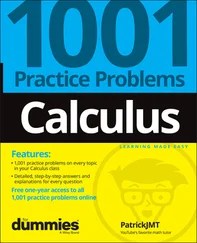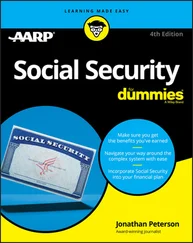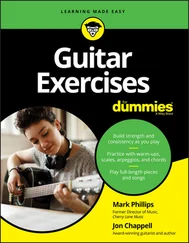111 111
112 112
113 113
114 114
115 115
116 116
117 117
118 119
119 120
120 121
121 122
122 123
123 124
124 125
125 126
126 127
127 128
128 129
129 130
130 131
131 132
132 133
133 134
134 135
135 136
136 137
137 138
138 139
139 140
140 141
141 142
142 143
143 144
144 145
145 146
146 147
147 148
148 149
149 150
150 151
151 153
152 154
153 155
154 156
155 157
156 158
157 159
158 160
159 161
160 162
161 163
162 164
163 165
164 166
165 167
166 168
167 169
168 171
169 172
170 173
171 174
172 175
173 176
174 177
175 178
176 179
177 180
178 181
179 182
180 183
181 184
182 185
183 186
184 187
185 188
186 189
187 191
188 192
189 193
190 194
191 195
192 196
193 197
194 198
195 199
196 200
197 201
198 202
199 203
200 204
201 205
202 206
203 207
204 208
205 209
206 210
207 211
208 212
209 213
210 214
211 215
212 216
213 217
214 218
215 219
216 220
217 221
218 222
219 223
220 224
221 225
222 226
223 227
224 228
225 229
226 230
227 231
228 232
229 233
230 234
231 235
232 236
233 237
234 238
235 239
236 240
237 241
238 242
239 243
240 244
241 245
242 246
243 247
244 248
245 249
246 250
247 251
248 253
249 254
250 255
251 256
252 257
253 258
254 259
255 260
256 261
257 262
258 263
259 264
260 265
261 266
262 267
263 269
264 270
265 271
266 272
267 273
268 274
269 275
270 276
271 277
272 278
273 279
274 280
275 281
276 282
277 283
278 284
279 285
280 286
281 287
282 288
283 289
284 290
285 291
286 292
287 293
288 294
289 295
290 296
291 297
292 298
293 299
294 300
295 301
296 303
297 304
298 305
299 306
300 307
301 308
302 309
303 310
304 311
305 312
306 313
307 314
308 315
309 316
310 317
311 319
312 320
313 321
314 322
315 323
316 324
317 325
318 326
319 327
320 328
321 329
322 330
323 331
324 332
325 333
326 334
327 335
328 336
329 337
330 338
331 339
332 340
333 341
334 343
335 344
336 345
337 346
338 347
339 348
340 349
341 350
342 351
343 352
344 353
345 354
346 355
347 356
348 357
349 358
350 359
351 360
352 361
353 362
354 363
355 364
356 365
357 367
358 368
359 369
As B.B. King might say, “You’ve got a right to play the blues!” And you’ve taken the first step in exercising your blues rights by getting a copy of Blues Guitar For Dummies. Your blues rights are inalienable — like life, liberty, and the pursuit of mojo. The blues is a form of music and a proclamation on the human condition, delivered proudly and loudly in song. The great thing about the blues is that it’s universal because everyone at one time or another gets the blues.
To help you sort out the many aspects of playing blues guitar, I organized this book to help you in your blues pursuits. The following sections give you an idea of what you’re getting into as you delve into the pages of this book and into the world of the blues!
Blues Guitar For Dummies covers all aspects of blues guitar, from playing the instrument to understanding the legends and lore associated with it. This book is for the beginning to intermediate blues guitarist. If you don’t know much about the guitar as an instrument, just hang out with me as I take you through the world of blues guitar. And even if you already own or know something about guitars, you can use the info in this book before you go out and make your next guitar purchase.
To get a meaningful experience from this book, you don’t have to play or own a guitar. You don’t even have to know what kind of guitar you want or what style of playing you want to pursue. This book is designed to help you figure that out. But this book is a guitar book, after all, so I focus on just guitars, guitar playing, and guitarists themselves.
Blues Guitar For Dummies also shows you how to play without requiring that you know how to read music first. Sure, I give you shortcuts in the form of written notation, diagrams, and symbols, but use these written figures as a reference as your specific needs demand.
You should find your own way to absorb the music in this book so you can play it back as your own. Do that through a combination of the elements below:
Chord diagrams: You form the left-hand chords you need by looking at the diagrams and matching your fingers to the symbols on the guitar’s neck.
Guitar tablature: Tablature is a type of notation that tells you to finger certain frets on specific strings. No “notes” are involved, just locations on which frets and strings to play. The tab staff appears just below the standard music notation staff. If you can already read music — even just a little — you can always see what note you’re fingering by looking at the staff immediately above the tab.
The Website ( www.dummies.com/go/bluesguitarfd ): Playing by ear is important because after you get a good idea of where to place your fingers, you want to let your ears take over. Listening to the audio tracks is important because it shows you how the music sounds, so you can figure out the rhythm of the song and how long to hold notes by listening, not reading. The audio tracks also has some cool features:Provides accompaniment, so you can hear how the examples sound in a band setting — with drums, bass, and rhythm guitar.Enables you to always find the track that corresponds to the printed music example in the chaptersGives you a count-off so that you can play along in time
The tab staff and music staff: To those of you who do like to read music (you two know who you are), this book delivers in that department, too. The music for many exercises and songs appears in standard music notation, just above the tab staff. You get the best of both worlds: tab showing you where to put your fingers and the corresponding music notation to satisfy all those schooled musicians out there.
Grab a copy of Blues For Dummies (no, I didn’t write it; it was written by Lonnie Brooks, Cub Koda, and Wayne Baker Brooks) for general blues info. Blues Guitar For Dummies is about playing blues guitar, and I devote more pages to playing than I do historical stuff.
Conventions Used in This Book
This book has a number of conventions that I use to make things consistent and easy to understand. Here’s a list of those conventions:
Right hand and left hand: If you play the guitar as a right-handed person, the right hand strums and picks and the left hand frets. If you’re left-handed, you can either play as a right-handed person, or you can reverse the process. If you choose the second method, remember to convert the terms and that I refer to the right hand and right-hand fingers as the strumming and picking hand and the left hand as the fretting hand. Nothing against lefties, mind you, but it’s easier and shorter to say “right hand” instead of “strumming or picking hand.”
Читать дальше












